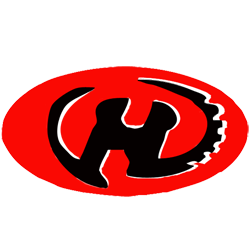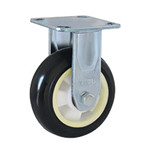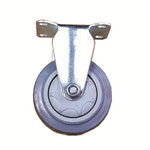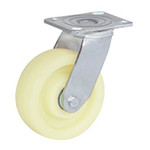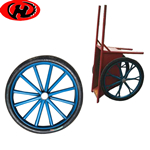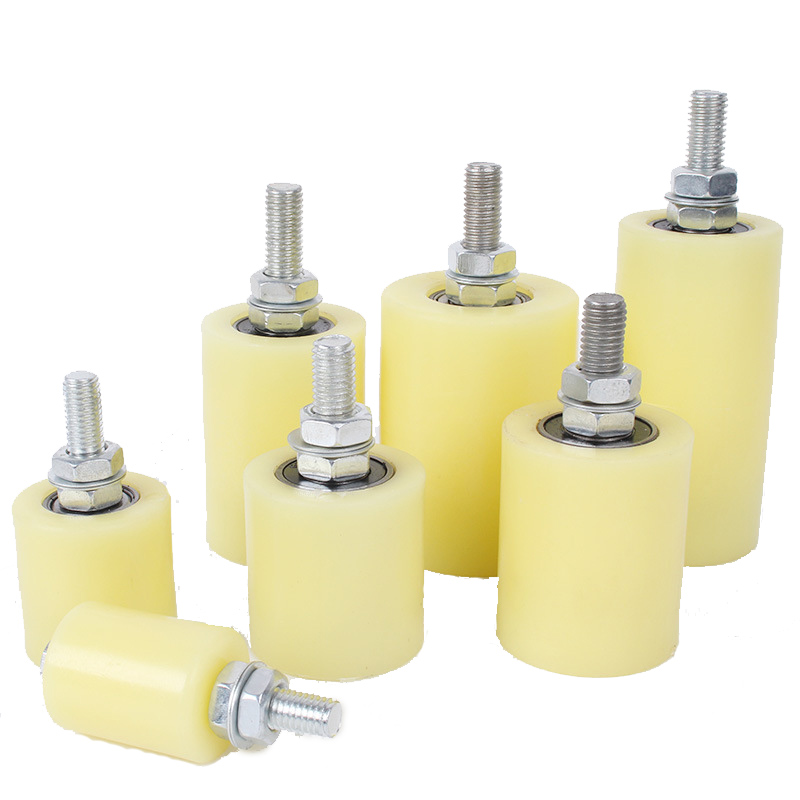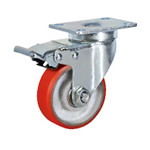
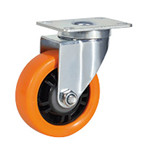
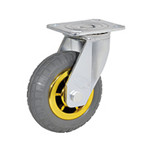
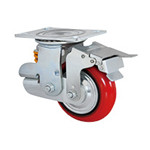
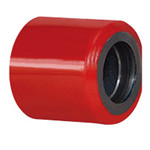
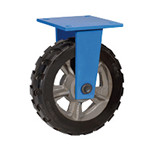
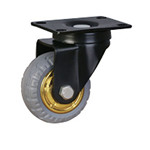
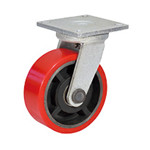
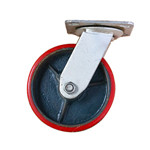
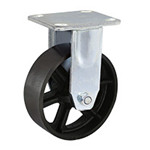
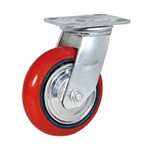
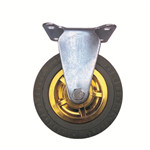
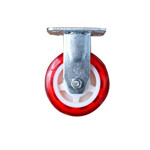
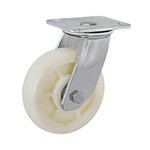
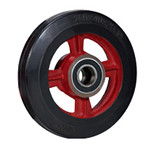
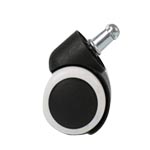
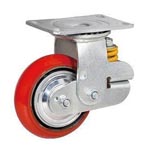
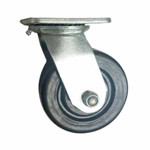
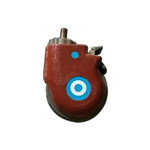
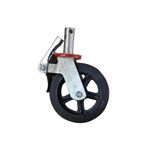
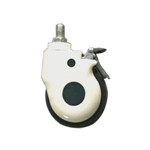
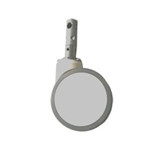
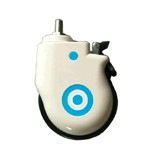
caster wheel which are also known as castor wheel is a wheeled device typically mounted to a larger object that enables relatively easy rolling movement of the object. Casters are essentially housings, that include a wheel and a mounting to install the caster to objects (equipment, apparatus and more). Casters are found virtually everywhere, from office desk chairs to shipyards, and from hospital beds to automotive factories. They range in size from the very small furniture casters to massive industrial casters, and individual load capacities span50kgs to 5000kgs. Wheel materials include cast iron, plastic(PVC,PP), rubber, polyurethane(shorter term PU), nylon, thermoplastic rubber, forged steel, stainless steel, aluminum, and more.
Two main categories of caster: swivel caster pivots around a kingpin to allow it to rotate and roll. The rigid caster(also called “fixed caster“) has its wheel mounted in a fixed frame (also call “housing,” “rig,” “fork,” or “yoke”) and it only rolls forward and backward.
Swivel caster
This type of caster allows for movement in all directions. They can have one or two sets of raceways that allow the caster to swivel 360-degrees under a load. The different types of swivel casters include:
Locking casters: There are several devices that can be added to casters to prevent the wheel from rotating or the swivel assembly from turning. Brakes (locks) types are wheel-brakes, total lock, central locking, or add-on butterfly brake.
Kingpin-less casters: This caster does not have a bolt and nut kingpin. The raceways are a one-piece construction forged together. This design is extremely durable and can be used in abusive applications and shock load applications where kingpin type casters may fail.
Hollow Kingpin casters: This type of caster has a tubular rivet that holds the caster together. The hole in the rivet can accept a bolt or a customized stem for any type of mounting requirement.
Plate casters: This is the most common type of means to mount a caster to a unit and is sometimes called the top plate. Most mounting plates contain four holes used to bolt the caster to the unit. Top plates are offered with various hole patterns to match numerous types of mounting requirements.
Stem casters: This type caster can have various stem styles to be used to mount the caster to a unit. Some common types of stems are threaded, round or square with mounting holes, grip-ring (also called “friction ring”), and expandable stems.
Rigid caster[edit]
This style of caster only allows forward and backward movement. Rigid (also called “fixed”) casters tend to be stronger than swivel casters; however, they are rated at the same capacity as the swivel casters for safety reasons. They can be made as a one-piece or two-piece construction that is riveted or welded.
